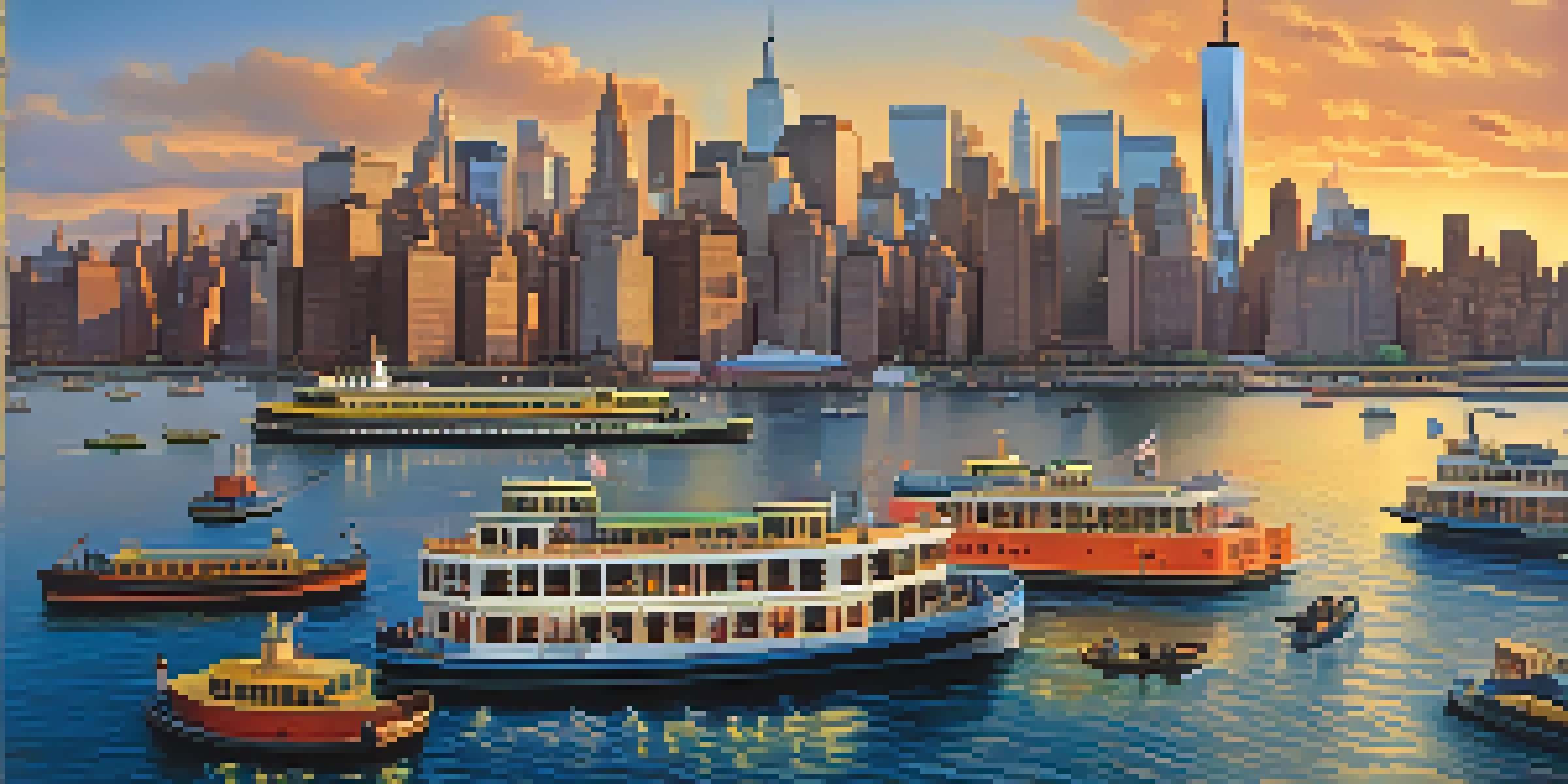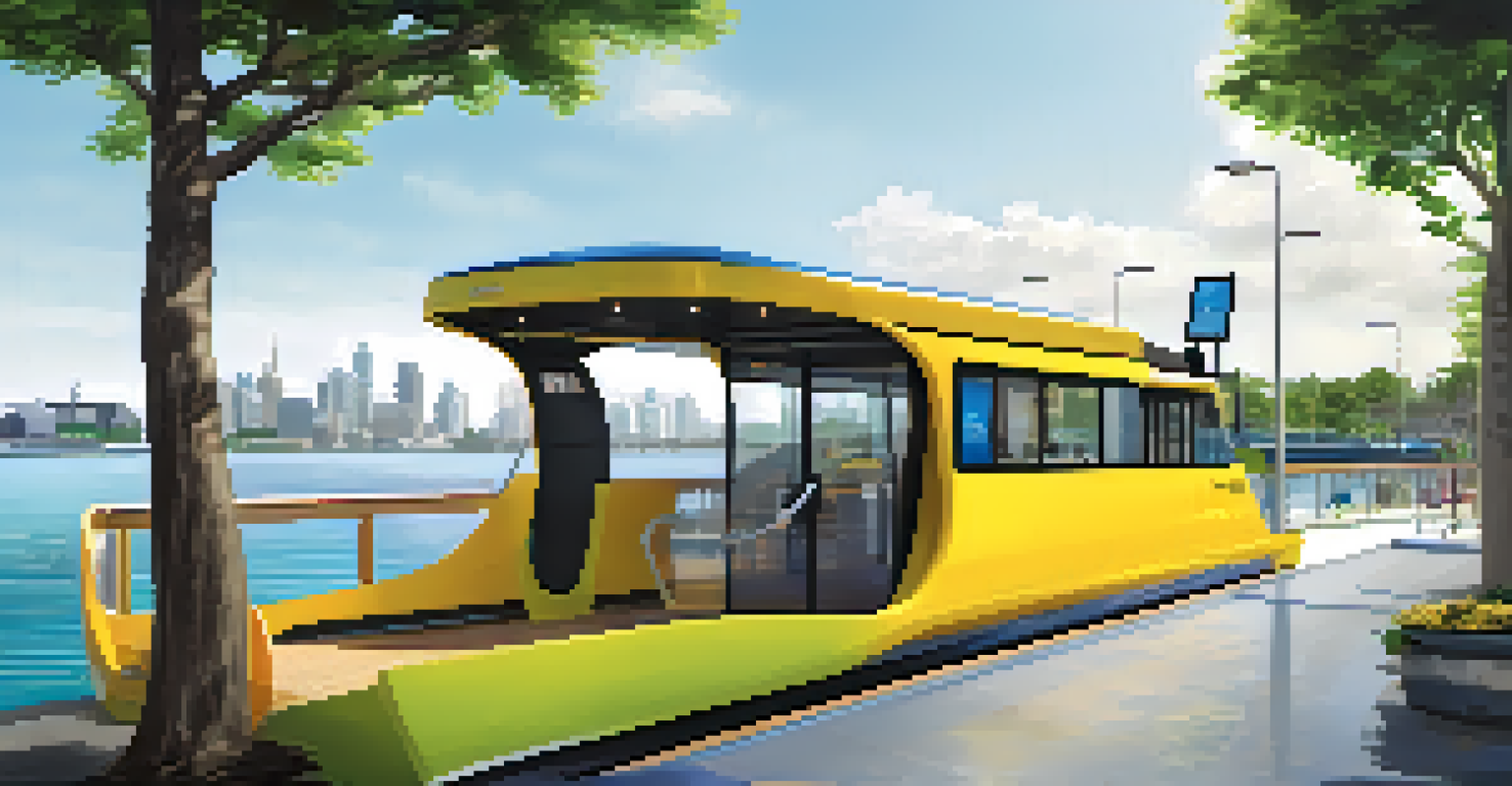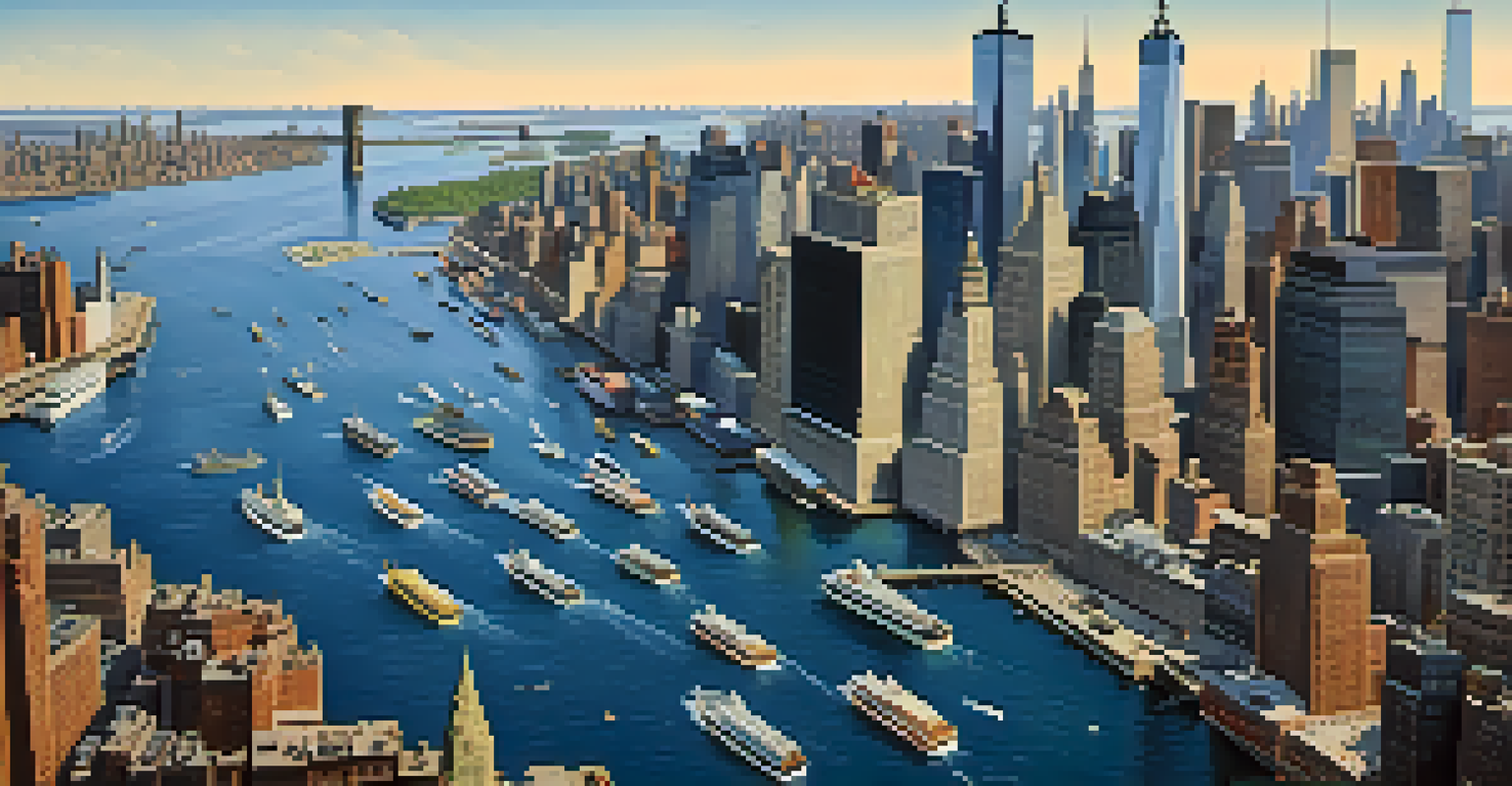The Development of NYC's Waterfront Transportation Systems

A Brief History of NYC's Waterfront Transportation
New York City's waterfront transportation has a rich history that dates back to the colonial era. Originally, ferries served as vital connections between the city's islands and the mainland, facilitating trade and travel. These early methods laid the groundwork for what would evolve into a complex network of transportation options.
The water is the most powerful tool we have to connect people and places.
As the city grew, so did the demand for more efficient transportation. The introduction of steam-powered ferries in the 19th century marked a significant advancement, making travel faster and more reliable. This innovation not only improved commuter access but also helped support the booming economy of the time.
By the early 20th century, the waterfront was bustling with activity, and various forms of transportation, including trolleys and barges, became integral to daily life. This period set the stage for the modern transportation systems that we see today, illustrating the importance of the waterfront in shaping NYC's urban landscape.
The Rise of the Ferry System
In the late 20th century, NYC's ferry system experienced a renaissance as the city sought to relieve congestion on its roads and subways. The resurgence was driven by a combination of environmental concerns and the need for efficient transit options. This revival not only provided a scenic mode of transportation but also helped connect underserved neighborhoods.

Ferries became synonymous with a unique commuting experience, offering picturesque views of the skyline and the harbor. Services expanded to include routes that connected Manhattan with Brooklyn, Staten Island, and even New Jersey. This growth highlighted the ferry system's adaptability and its role in enhancing the city's transportation network.
Ferries Revitalize NYC Transit
The resurgence of NYC's ferry system in the late 20th century provided a scenic and efficient alternative to road congestion.
Today, ferries are an essential part of NYC's transportation ecosystem, accommodating thousands of passengers daily. They not only provide a practical solution to transit challenges but also foster a sense of community among riders who share the experience of traveling across the water.
The Role of Water Taxis in Urban Mobility
Water taxis have emerged as a flexible and convenient option for navigating NYC's waterfront. These small, nimble boats offer quick trips between popular destinations, catering to both tourists and locals. The ability to hop on a water taxi to avoid traffic has made them a favored choice for many commuters.
Cities are not just built on land; they are built on water, which serves as a bridge between communities.
The service is particularly appealing during peak hours when roadways can become overcrowded. Water taxis provide a reliable alternative, ensuring that passengers reach their destinations on time. This aspect is especially crucial for those who work in busy areas such as Lower Manhattan or along the waterfront.
Moreover, water taxis contribute to the city's sustainability efforts by promoting water-based transportation. By utilizing the rivers and harbor, they help reduce vehicular congestion and lower emissions, aligning with NYC's goal of becoming a greener city.
Enhancements in Infrastructure and Accessibility
Recent investments in waterfront infrastructure have significantly improved accessibility for commuters. New terminals and docks have been developed to accommodate various types of water transport, making it easier for passengers to navigate the system. These enhancements are crucial for ensuring that all New Yorkers can take advantage of waterfront transportation.
Additionally, initiatives to make docks wheelchair accessible and user-friendly have further broadened the appeal of ferries and water taxis. By prioritizing inclusivity, NYC is working to ensure that everyone can enjoy the benefits of its waterfront transport options, regardless of mobility challenges.
Water Taxis Enhance Urban Mobility
Water taxis offer a flexible and speedy commuting option, especially during peak hours, while promoting sustainability.
The integration of technology into these systems, such as mobile apps for scheduling and ticketing, has also simplified the commuting experience. Passengers can now plan their trips more efficiently, making the waterfront an increasingly attractive option for daily travel.
Environmental Benefits of Waterfront Transport
Waterfront transportation systems play a vital role in NYC's environmental strategy. By promoting the use of ferries and water taxis, the city aims to decrease reliance on traditional vehicles, which contribute heavily to air pollution. This shift not only benefits the environment but also enhances the quality of life for residents.
The waterways provide a natural route for transporting people, reducing the number of cars on the road. As a result, this mode of transport helps lessen congestion, leading to shorter travel times and decreased stress for commuters. The scenic views also provide a refreshing alternative to the typical crowded subway experience.
As NYC continues to invest in its waterfront transport systems, the focus on sustainability remains paramount. By prioritizing eco-friendly transit options, the city sets an example for other urban areas looking to reduce their carbon footprint and create a more sustainable future.
Future Innovations in Waterfront Transportation
Looking ahead, NYC's waterfront transportation systems are poised for further innovation. Concepts like electric ferries and autonomous water taxis are already being explored as part of the city's commitment to modernizing transit. These advancements promise to enhance efficiency while also aligning with environmental goals.
The potential for integrating smart technology into these systems is also on the horizon. Features such as real-time tracking and automated scheduling could revolutionize the way passengers interact with waterfront transportation. This would streamline the user experience and make travel even more accessible.
Infrastructure Improvements Boost Access
Recent investments in waterfront infrastructure have made transportation more accessible for all New Yorkers, focusing on inclusivity.
As urban populations continue to grow, the need for effective transportation solutions becomes increasingly critical. By embracing new technologies and innovative practices, NYC can continue to lead the way in developing a waterfront transportation system that meets the needs of its diverse residents.
Community Impact of Waterfront Transportation
The development of NYC's waterfront transportation has had a transformative effect on local communities. By improving access to different neighborhoods, it fosters economic growth and encourages tourism. Local businesses near ferry terminals and water taxi stops often see increased foot traffic, contributing to a vibrant local economy.
Moreover, the waterfront serves as a communal space where people can gather and enjoy recreational activities. With parks and amenities along the water's edge, residents can take advantage of the scenic views and outdoor opportunities that waterfront transportation promotes. This not only enhances community well-being but also strengthens social connections.

As these systems continue to evolve, their positive impact on communities will likely grow. By prioritizing accessible and efficient transportation, NYC is not only connecting its residents but also enriching the cultural fabric of the city.
Conclusion: The Future of NYC's Waterfront Transportation
In conclusion, the development of NYC's waterfront transportation systems reflects the city's adaptability and commitment to progress. From the early days of ferries to the modern innovations we see today, these systems have evolved to meet the needs of an ever-changing urban landscape. As we look to the future, the importance of sustainability and accessibility remains paramount.
With ongoing investments and a focus on technology, NYC is poised to enhance its waterfront transportation even further. The potential for increased ridership and improved services will undoubtedly benefit both residents and visitors alike. The waterfront will continue to be a vital part of the city's identity and transportation framework.
Ultimately, the ongoing evolution of waterfront transportation is not just about moving people; it's about connecting communities, fostering economic growth, and ensuring a sustainable future for New York City. As the city navigates these waters, the possibilities are as vast as the harbor itself.